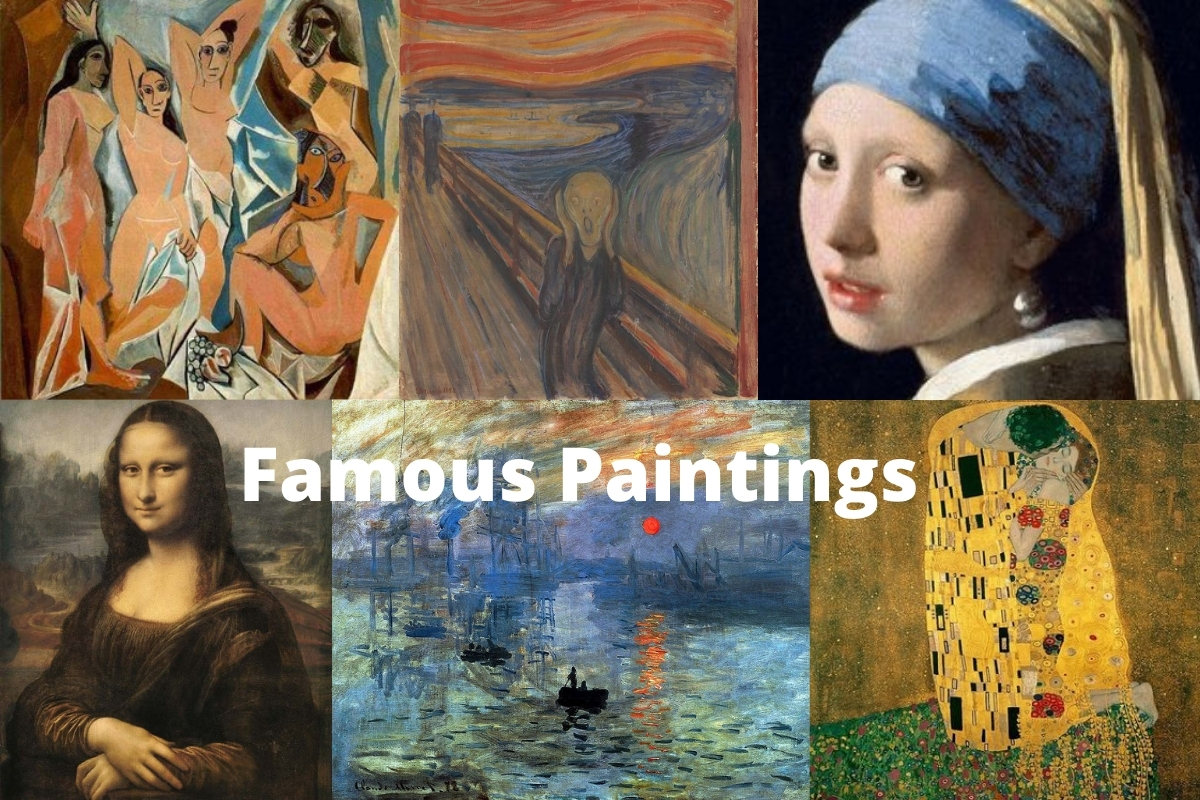The most famous paintings in the world are the result of both raw natural talent and genius but each work also contains an interesting back story.
Each piece of artwork on this list are some of the finest ever produced and all are shining examples of their particular genre of art.
Throughout history, the debate on which is the greatest painting ever produced has raged without agreement.
At its core art is a subjective medium that means many different things to many different people and because of this there never will be a definitive list.
Below you will find a list of the best paintings of all time.
Famous Paintings
1. The Mona Lisa – Leonardo da Vinci
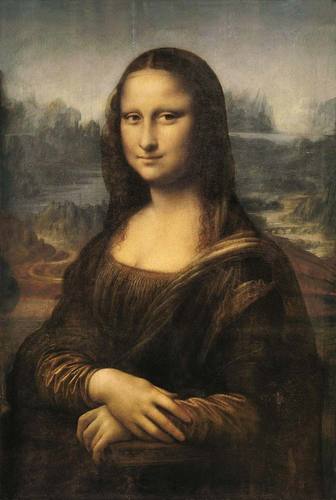
The most famous painting from the most famous artist that ever lived, Da Vinci’s Mona Lisa is said to have one of the most realistic and captivating smiles ever painted.
Such is the draw of her smile that there are ques at the Louvre to get a glimpse of it.
It is believed to be of Lisa Gherardini and is a half-height portrait.
Considered a masterpiece within art circles it only gained notoriety with the general public after it was stolen from the Louvre in 1911 by an Italian employee named Peruggia.
Also Read: Famous da Vinci Paintings
Peruggia as a patriot of Italy believed that the masterpiece should be returned to Italy and hang in an Italian public gallery, not in a French one.
It was recovered and now hangs in the Louvre where it is viewed by thousands of visitors every week.
It also holds the record for the most expensive insurance valuation at $100 million as far back as 1962, in today’s money it’s somewhere north of $800 million.
2. The Scream – Edvard Munch
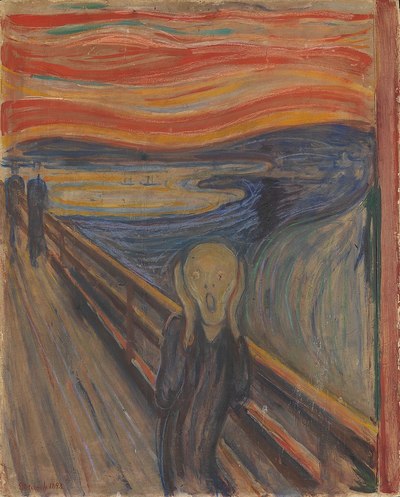
Edvard Munch’s ‘The Scream’ originally titled ‘The Scream of Nature’ has become a symbol of anxiety and is one of the most iconic images ever produced.
Munch created four versions of the image two in paint and two in pastel.
He was inspired whilst out for an evening walk with friends and recalled viewing the setting sun when all of a sudden:
‘the sky turned blood red – I paused, feeling exhausted, and leaned on the fence – there was blood and tongues of fire above the blue-black fjord and the city – my friends walked on, and I stood there trembling with anxiety – and I sensed an infinite scream passing through nature.‘
3. The Last Supper – Leonardo da Vinci

Da Vinci’s ‘The Last Supper’ is his most famous works of art and it resides in the Convent of Santa Maria delle Grazia in Milan, Italy.
It portrays the scene of the last supper of Jesus and the twelve apostles.
Leonardo did not use a more traditional fresco technique for The Last Supper as he favored oil as a medium which allows the work to be done more slowly as oil has a longer drying time.
As a result of this, he had to seal the wall beneath with a double layer of gesso, mastic, and pitch.
Very little of the original is left as it has been restored numerous times and has suffered at the hands of both intentional damage and environmental factors.
4. Girl With a Pearl Earring – Vermeer
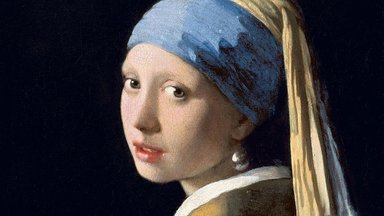
The Girl With a Pearl Earring is thought to have been painted by Vermeer in 1665.
It is known as a tronie which is a Dutch word from the 17th century which roughly translates as a head or mug shot and is not intended to be a conventional portrait.
Modern analysis has shown that the current black background had a deep green which was achieved by applying a green glaze over the black under layer, the green glaze has long since faded.
Regardless the girl is still a timeless beauty and it is one of the most popular paintings of all time.
5. The Birth of Venus – Sandro Botticelli
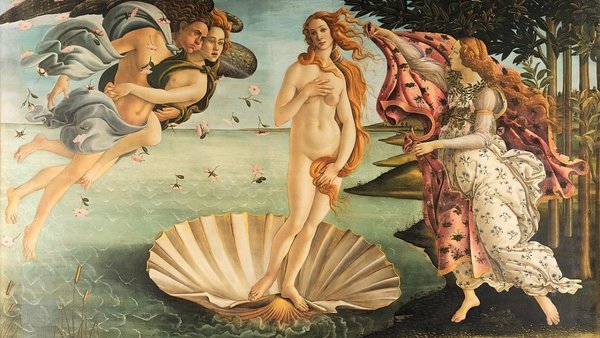
The Italian Renaissance painter Sandro Botticelli is believed to have painted The Birth of Venus some time in and around the mid 1480s.
It shows the Roman goddess Venus arriving at the shore having been born fully grown at sea.
It is one of the most classic works of art to depict a mythological image the other being his other work the Primavera.
Both pieces of art were commissioned by the Medici family, one of the most powerful banking dynasties of the time in Florence.
The Medici’s as patrons of the arts made a massive contribution to the commissioning and patronage of artists for several generations of the family.
6. Sunflowers – Vincent van Gogh

There are actually twelve Sunflowers produced by Van Gogh split between his time in Paris and Arles.
The first set which where painted in Paris have sunflowers arranged in a vase with some of the flowers laying flat on a surface or tabletop whereas it is the later paintings that were finished in Arles are contained in vases in an arranged fashion and stand upright.
The yellow oil paint that is used in the later works was only newly available to painters and Van Gogh embraced these new vibrant shades of yellow in his work.
7. The Kiss – Gustav Klimt
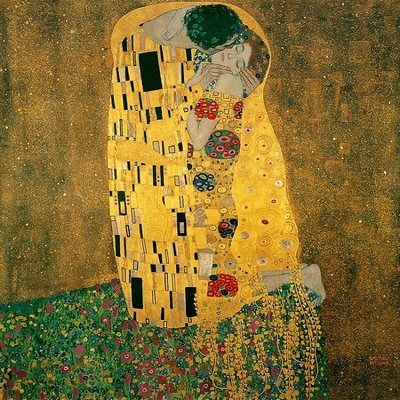
Gustav Klimt painted The Kiss roughly around 1907. It is predominantly oil on canvas yet it is a mixed medium painting as it contains gold leaf, platinum, and silver.
A rather large piece of art measuring 180cm x 180cm and currently hangs in Vienna’s Austrian gallery.
It is one of the best pieces that represent the Symbolism movement or genre of art.
During Klimt’s Golden Period he made use of gold leaf to add a rather delicate yet glimmering appearance.
8. Impression Sunrise – Claude Monet
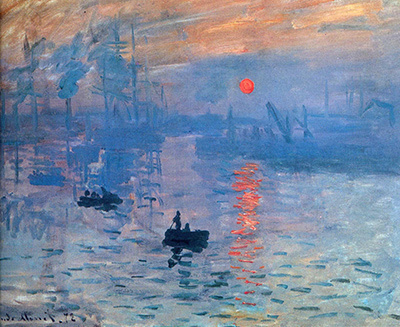
Impression Sunrise painted by Claude Monet which depicts his home town of the port of Le Havre in France.
It is the painting that inspired the naming of the impressionist movement.
The Paris Salon rejected Monet along with some of the biggest names in impressionism at the time. They then organized their own exhibition to display their works of art.
They had mixed reviews with some visitors claimed that they could not distinguish what the paintings were trying to depict.
Impressionism is one of the first true modern art movements and Monet was it’s brightest star.
9. The Creation of Adam – Michelangelo

Michelangelo’s The Creation of Adam adorns the ceiling of the Sistine Chapel in the Vatican it is the finest work of art ever painted in the fresco style.
It took him over four years to complete the work whilst working for hours on end on his back on scaffolding.
The total area of the fresco is roughly 500 square meters and contains over 300 figures. The central line of the ceiling contains nine episodes from the book of Genesis.
Along with The Last Supper, it is one of the most recognizable religious works of art ever produced.
To stand beneath it and gaze upwards is the only way to truly appreciate just how much work and talent was put into it.
10. Guernica – Pablo Picasso

Spanish Nationalist forces requested Pablo Picasso to paint Guernica as an anti-war protest against the bombing of the town Guernica by Nazi and fascist Italian forces.
Painted in 1937 and is not only one of Piccaso’s best-known artworks it is also one of his largest measuring 3.49m x 7.76m.
It was displayed at the 1937 Paris International Exposition after the Spanish Republican government requested Picasso for a piece to display at the Spanish pavilion of the 1937 Paris World’s Fair.
It was sent on a world tour and the funds raised from the tour helped fund the Spanish war relief.
11. The Starry Night – Vincent van Gogh
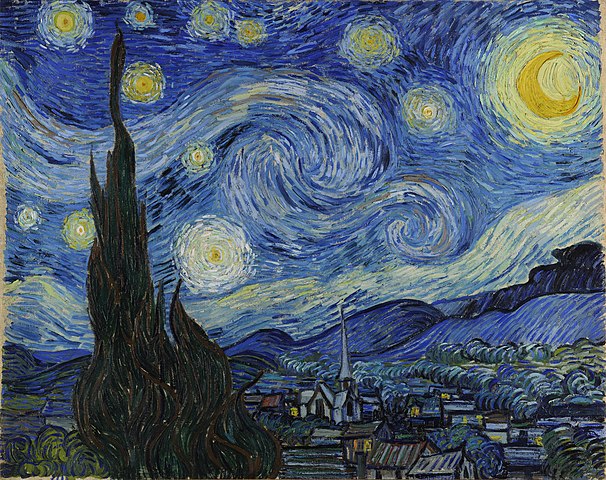
Van Gogh spent time in the asylum of Saint-Paul-de-Mausole near Saint-Remy-de-Provence suffering from bouts of depression and paranoia.
It was during this time that he painted The Starry Night which was the view from his east-facing window in the asylum.
The image represents his vision of an ideal village before sunrise.
His stay at the asylum was a time when he produced some of his greatest works such as Irises and his blue self-portrait.
12. The Night Watch – Rembrandt van Rijn

The Night Watch painted in 1642 by Rembrandt van Rijn and is a very famous artwork for three distinct reasons.
Military works or group portraits, in general, would be quite static scenes with little or no movement in them.
The Night Watch however depicts the civic militia guards led by Captain Banning Cocq preparing to march out.
Second, it’s size is also of particular note, as it measures a colossal 3.63m x 4.37m
Third it is notable for the dramatic use of light and shade to draw the eye to the central-most characters in the scene.
Rembrandt was a true master of light, he painted The Night Watch while at the pinnacle of his career and it is seen as his most important piece of art.
13. Las Meninas – Diego Velazquez
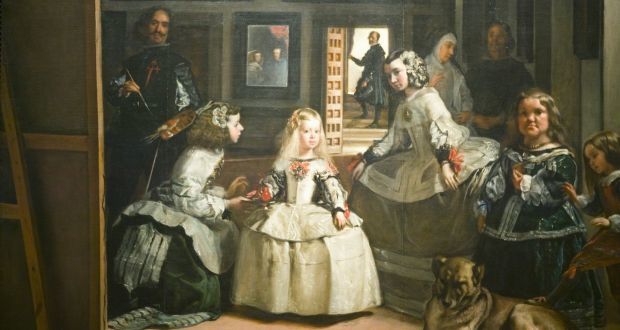
Few works of art have remained a mystery about the original intent behind the painting.
Las Meninas(The Ladies-in-waiting) painted by Diego Velazquez in 1656 and depicts a scene from the Spanish court of which Velazquez held the position of palace chamberlain.
The scene has somewhat baffled art historians as it contains an odd cast of characters which includes the Velazquez himself, a nun, a dwarf, and a princess.
It was a break from more formal royal portraiture that usually has only the royal family featured and arranged in a much more ordered and hierarchical fashion.
14. Dance at Le Moulin De La Galette – Pierre-Auguste Renoir
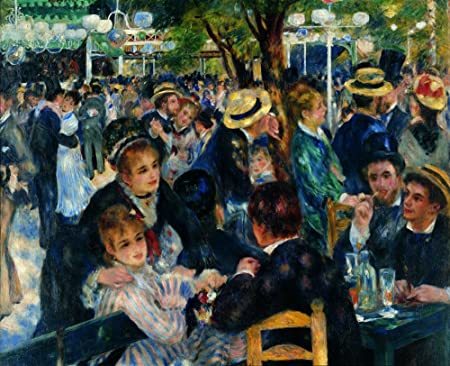
The Dance at Le Moulin De La Galette is Pierre-Auguste Renoir’s finest work and is a snapshot of the regular Sunday gathering by ordinary Parisians at the Moulin de la Galette.
A smaller almost identical version was also painted by Renoir and is believed to be in a private collection in Switzerland and is near-identical to the larger but with brighter colors used.
The characters at the table on the left are Renoir’s friends and not some random strangers.
15. Les Demoiselles d’Avignon – Pablo Picasso
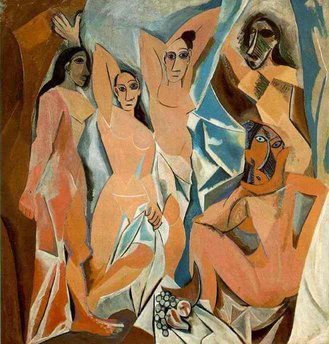
Considered by many to be one of the most important proto-cubist(a transitional phase between more traditional forms of art and the establishment of Cubism) works by Picasso.
It created great controversy when first produced and received very mixed reviews even from some of Picasso’s closest friends such as Matisse who considered the work to be somewhat of a bad joke.
It was first exhibited in 1916 and was considered immoral by many at the time.
16. The Persistence of Memory – Salvador Dali
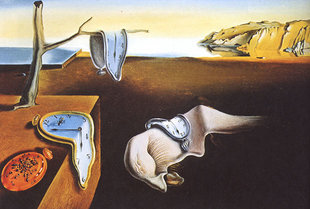
The Persistence of Memory was pained by Salvador Dali in 1931 and is an image that most people usually associate with the surrealism movement.
Hard objects appear to melt or go limp and time which is represented by the watches starts to decay.
It is one of his first works where he used his ‘paranoid-critical’ technique where he projects his phobias after experiencing self-induced hallucinations.
The image has been reproduced countless times as small prints, postcards, and wall posters.
17. Cafe Terrace at Night – Vincent van Gogh
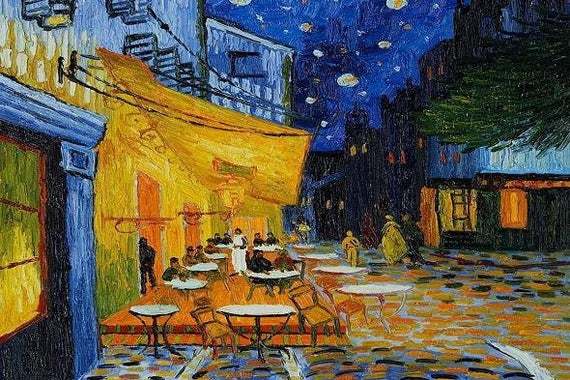
Van Gogh painted Cafe Terrace at Night in 1888 and depicts an evening cafe scene in the town of Arles, France where visitors to this day can travel and experience the same view as the Van Gogh from the corner of Place du Forum.
The deep blue of the background and the warmer yellows of the cafe(which was artificially lit with gas lights) creates a sharp contrast.
The work is unsigned by Van Gogh, however, he did mention it in at least three pieces of correspondence one of which was to his sister which has been used to verify that the work is his.
You can visit the very cafe in Arles and it looks almost identical today to how it was in Van Gogh’s day.
18. American Gothic – Grant Wood
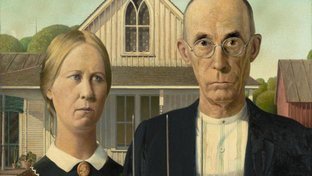
American Gothic is one of the most famous images of American art and was painted in 1930 by Grant Wood.
The image depicts what Woods imagined would be “the kind of people [he] fancied should live in that house” based on rural life in Iowa.
The “Gothic” reference in the title relates to the style of the house “Carpenter Gothic” which is made apparent by the Gothic style window which adorns an otherwise seemingly very basic looking timber-framed farm house.
The image has been parodied numerous times in various forms down through the years yet it is instantly recognizable as one of American art’s most important works.
19. The Old Guitarist – Pablo Picasso
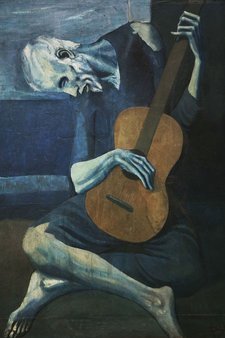
The Old Guitarist was painted in Picasso’s “blue” period where his works of art were created in very somber shades of blue and grey.
During this period he painted many images of the poor and downtrodden a situation in which he was all too familiar.
It was painted in 1903 following the death of one of Picasso’s closest friends by way of suicide.
An x-ray by the Art Institute of Chicago revealed that there are several under-painted images one of which is a ghostly looking woman’s head that leans to the left.
20. The School of Athens – Raphael
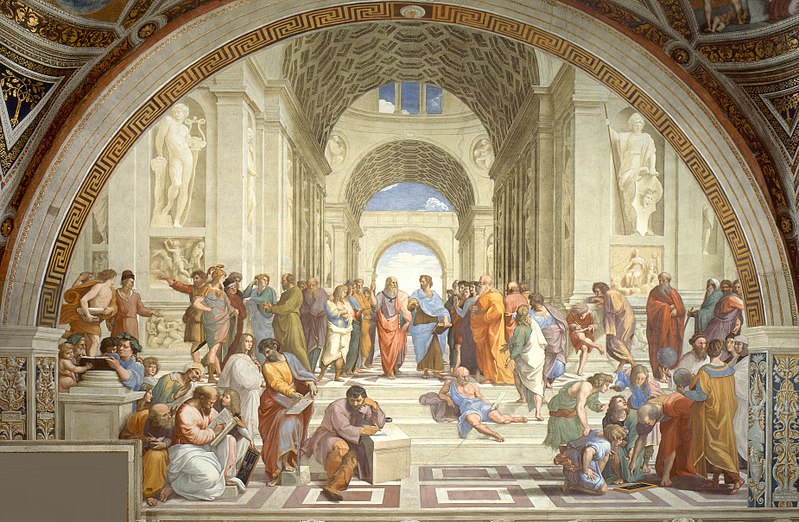
One of Raphael’s finest fresco’s The School of Athens contains almost every important Greek philosophers.
Painted between 1509 and 1511 in the Apostolic Palace, one of four rooms that are adorned by Raphael’s fresco’s each of which are stunning examples of High Renaissance art.
Of particular note is the use of perspective projection a technique that Raphael learned from Da Vinci.
21. The Great Wave off Kanagawa – Katsushika Hokusai
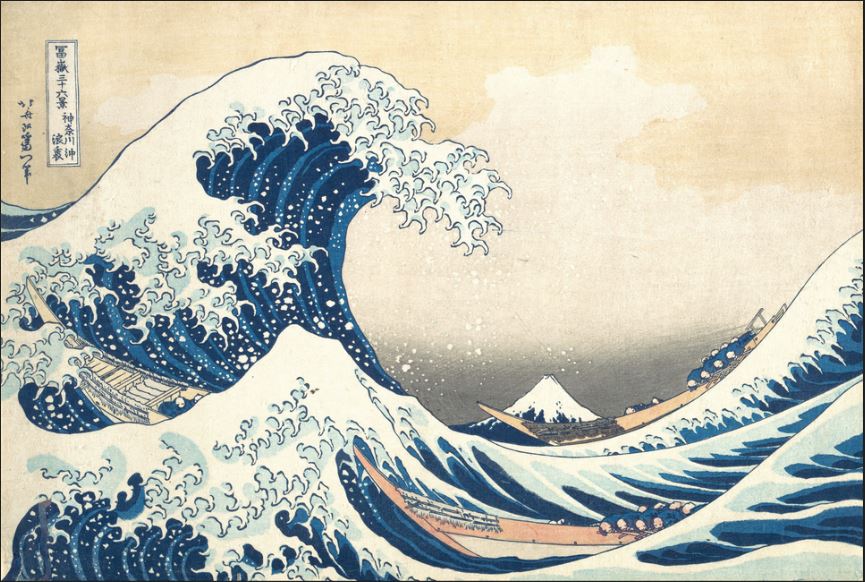
Katsushika Hokusai created this Japanese masterpiece during a period when Japan had been cut off from the rest of the world. The artist created a sequence of works that focused on Mount Fuji and the sea.
This ocean painting was created between 1830 and 1832, and it depicts the wild waters surrounding the island of Kanagawa, which was well-known to sea-faring Japanese fishermen and traders.
This painting was part of a series called Thirty-Six Views of Mount Fuji, and it differs from many others in that it focuses on the rogue wave smashing down on the defenseless boats below rather than the famed peak. In truth, Mount Fuji is hardly visible and looks to be a smaller wave in the painting’s distant background.
Many art critics and enthusiasts of the time remarked on this work, pointing out that the painting’s perspective makes the legendary mountain appear small and insignificant in comparison to the massive wave.
The famous paintings in this list represent some of the greatest creations known to mankind and will live on in history as some of humanities greatest creations.

